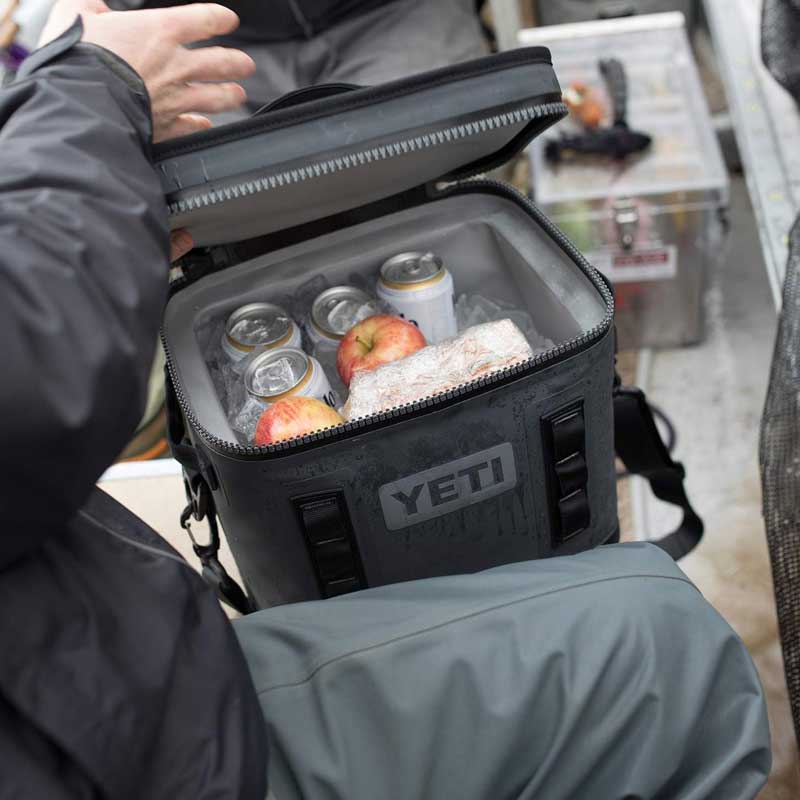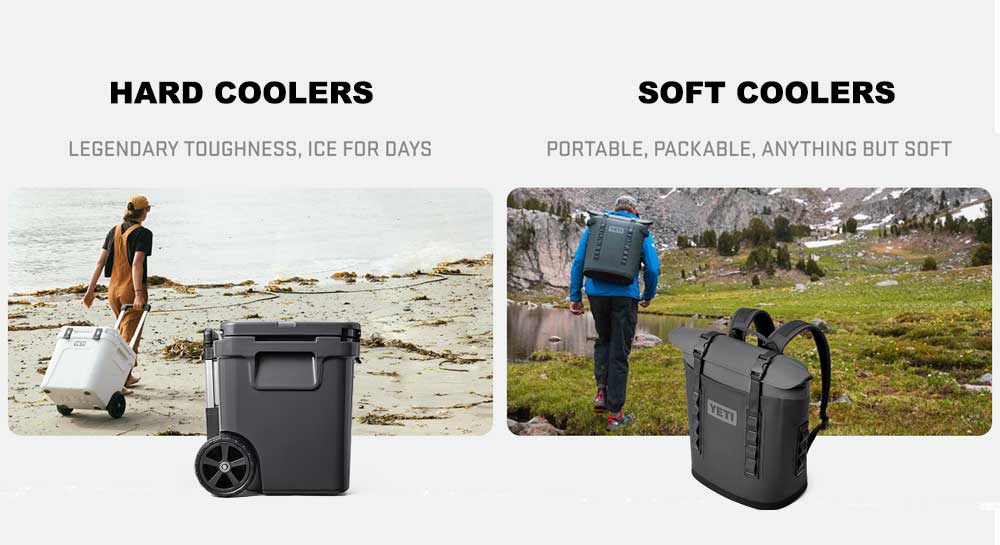Why Are YETI Coolers So Expensive? Materials, Value & Comparison

Introduction
Why would anyone pay $350–$400 for a YETI cooler when a basic cooler costs just $60? The answer lies in YETI’s authentic origin story, premium-grade materials, and unmatched durability.
TIP: Price makes sense when you understand the story and the materials behind it.
1. The YETI Origin Story
In 2006, brothers Roy and Ryan Seiders from Texas loved fishing but hated their coolers. Hinges broke, lids cracked, and ice melted within hours.
They wanted a cooler they could stand on, haul into boats, and trust for week-long trips. Since it didn’t exist, they built it.
That frustration became YETI—a brand born not from marketing but from a need for stronger materials and better design.
2. Material Quality: The Real Cost Driver

Rotomolded Polyethylene Shell
- Same as whitewater kayaks: UV-resistant and impact-proof.
- One-piece seamless shell → no weak points.
Thick Polyurethane Foam Insulation
- Budget coolers: <1 inch → 1–2 days of ice.
- YETI: 2–3 inches → 5–7 days of ice.
Freezer-Grade Rubber Gasket
- ColdLock™ gasket seals like a freezer door.
- Prevents warm air leaks and extends ice life.
Industrial-Strength Hardware
- T-Rex™ latches → thick rubber, unbreakable.
- NeverFail™ hinges → reinforced metal pins.
- Non-slip feet + reinforced handles.
TIP: Each upgrade adds cost but eliminates failure points.
Comparison Table – Materials
| Component | Budget Cooler | YETI Cooler |
| Plastic Shell | Thin injection-molded | Rotomolded polyethylene |
| Insulation | <1 inch foam | 2–3 inches PU foam |
| Gasket | Thin strip | Freezer-grade rubber |
| Hinges/Latches | Plastic | Metal + industrial rubber |
| Durability | 1–2 years | 10–20 years |
| Ice Retention | 1–2 days | 5–7 days |
For brands exploring alternative waterproofing technologies, see our custom fabrics expertise.
Extra Comparison – Why YETI Costs More Than Regular Coolers
| Feature | Regular Cooler ($40–$60) | YETI Cooler ($300–$400) |
| Shell Material | Thin plastic, prone to cracks | Rotomolded polyethylene, impact-proof |
| Insulation | <1 inch basic foam | 2–3 inch polyurethane foam, multi-day cold retention |
| Seal/Gasket | Weak strip, leaks easily | Freezer-grade rubber gasket, airtight |
| Hinges & Latches | Plastic, break in 1–2 years | Industrial rubber + metal, lasts decades |
| Durability | 1–2 years average use | 10–20 years, bear-resistant |
| Ice Retention | 1–2 days | 5–7 days |
| Brand Value | Functional only | Lifestyle + trust + identity |
TIP: When compared side by side, YETI is not just “more expensive”—it is a different class of product.
3. Hard Coolers vs Soft Coolers: Two YETI Categories

Many people think of YETI only as big, heavy-duty hard coolers. But YETI actually sells two distinct product types—and both follow the same philosophy of premium materials and durability.
Hard Coolers
- Construction: Rotomolded polyethylene shell + thick PU foam
- Durability: Virtually indestructible, bear-resistant
- Ice Retention: 5–7 days
- Use Cases: Hunting, fishing, expeditions, long-term outdoor use
- Drawback: Heavy and less portable
Soft Coolers
- Construction: High-density fabric (DryHide™), closed-cell foam insulation, RF welded seams
- Durability: Strong but flexible, abrasion-resistant
- Ice Retention: 1–3 days
- Use Cases: Hiking, day trips, picnics, travel
- Drawback: Less storage capacity, shorter cooling time
Comparison Table – Hard vs Soft Coolers
| Feature | Hard Coolers | Soft Coolers |
| Construction | Rotomolded plastic + PU foam | High-density fabric + foam insulation |
| Durability | 10–20 years, bear-resistant | 5–10 years, abrasion-resistant |
| Ice Retention | 5–7 days | 1–3 days |
| Portability | Heavy, requires handles | Lightweight, shoulder straps/backpack |
| Price Range | $300–$400+ | $200–$300 |
| Best For | Expeditions, hunting, offshore trips | Day hikes, urban use, short trips |
TIP: YETI isn’t just selling coolers—it’s selling different solutions for different users.
4. Case Stories: YETI in the Wild
Alaska fishing guides: keep catches fresh for days.
Colorado rafting: Panga Duffels stay waterproof even submerged.
Construction workers: sit, stand, and toss YETIs daily—no damage.
Independent testing from Outside Online confirms that YETI’s insulation and durability outperform most cheaper alternatives.
5.Long-Term Value
| Cooler Type | Price | Lifespan | Cost Per Year |
| Budget Cooler | $60 | 2 years | $30/year |
| YETI Cooler | $350 | 15 years | $23/year |
So YETI is expensive upfront, but cheaper per year in the long run.
TIP: Expensive upfront doesn’t always mean costly over time. Learn how logistics can also reduce hidden costs in our shipping services.
6.Conclusion: What This Means for Buyers
YETI coolers are expensive because they combine a true story, premium materials, rugged design, and proven durability. Customers pay for trust and identity.
As Business Insider highlighted, YETI has become more than a cooler—it’s a lifestyle.
For brands and sourcing managers:
These materials and processes—rotomolded shells, PU foam, welded waterproof seams—are not exclusive.
At Vancharli Outdoor, we are a professional waterproof cooler bag manufacturer with 30+ years of experience.
HF welded waterproof seams
Premium foam insulation for multi-day cold retention
Reinforced zippers, handles, and seams
OEM/ODM customization
If you need a factory capable of YETI-level quality at competitive costs, Vancharli is your partner. Explore our services or request a sample today.
Final TIP: Consumers buy YETI for story + materials. Smart brands partner with factories like Vancharli to achieve the same performance—under their own brand.
7. FAQ
Q1: Why so heavy?
Because of thicker plastic and insulation.
Q2: Is it just branding?
No, the real cost comes from premium materials.
Q3: Cheaper alternatives?
RTIC, Orca, Pelican exist, but consistency differs.
Q4: Do they really keep ice for 7 days?
Yes, under normal use.
See Also
Comparison of the top 5 materials for waterproof bags
Step by Step Guide to Waterproof Bag Quality Inspection
Why Waterproof Bags Are in High Demand in the Outdoor Industry



Comments are closed